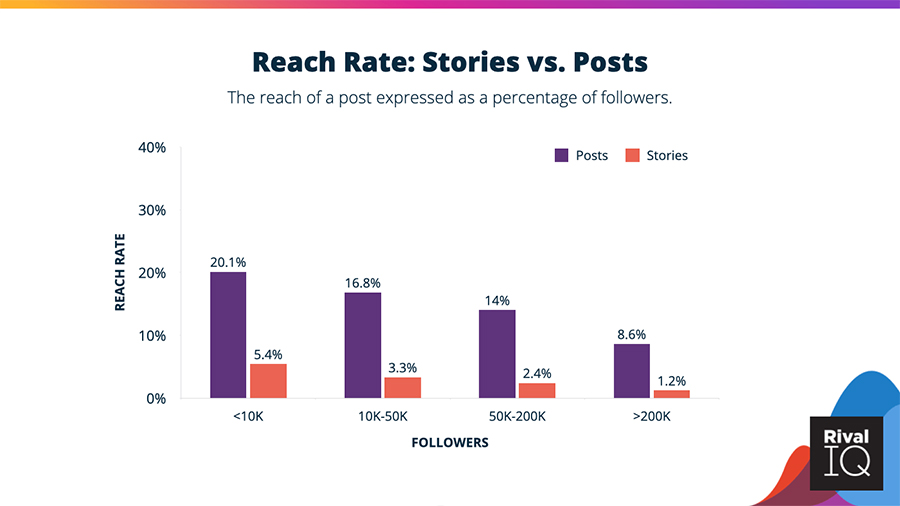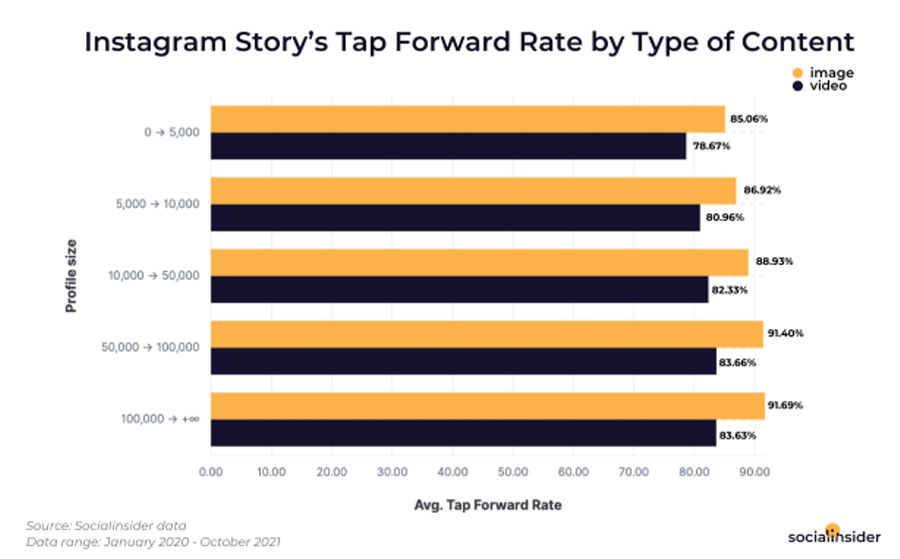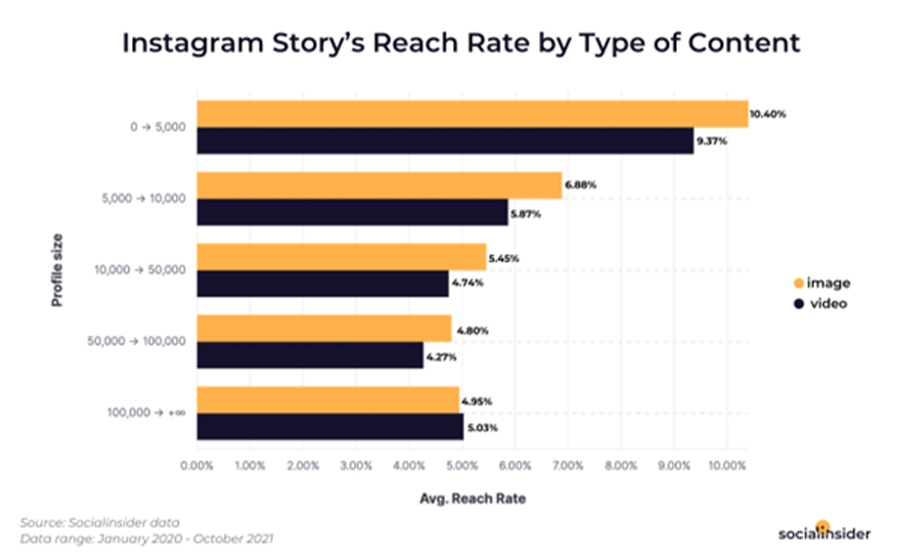



Two recently released studies analyzed brands’ usage of stories in 2021 compared to 2020. Let’s look at a few of these key takeaways and what that may mean for your brand’s Instagram content strategy in 2022.
The two studies we’ll be referencing are the 2022 Instagram Stories Benchmark Report by RivalIQ and the Instagram Stories Study by SocialInsider.
The biggest takeaway from both studies is that brands are posting more story content than ever (double compared to 2020). What this means to you: more content and more competition. While there is more content than ever, that content is reaching a smaller percentage of followers. Stories are competing against Instagram posts and YouTube and TikTok for eyeballs.
Should your brand focus on Instagram stories, posts or both? As always, it depends on your goals. Let’s break it down a bit.
Both post and story reach rates declined in 2021. As mentioned, competition with eyeballs on other platforms as well as other post types within platform are all vying for attention (e.g., IGTV and Reels). However, posts still outperform stories in overall reach. Small brands with follower counts up to 10K can expect around 4x more of their followers to see their posts than their stories, and the disparity only grows more dramatic as follower counts increase.


With lower reach, should your brand even bother with stories? At the risk of sounding like a broken record, it depends on your goal. Posts are better for reach, but stories show higher engagement metrics. The ability to tell a story and share more in-depth content with followers is what connects followers to stories and your brand. But the content needs to be compelling. With every Instagram story added to the last one posted, expect your retention rate to decrease. Posting up to five stories per day ensures a retention rate of over 70%. Exceed five per day and even the most compelling content can’t keep users engaged.
Tip: To expand a story’s reach, pin it to the profile so it will be viewable beyond the 24 hours of the original story duration.
When talking about story engagement, it’s important to call out and define two story-engagement metrics:
Tap-forward Rate
Analyzing the tap-forward rate is tricky because it can be both positive and negative. The viewer has had enough of your content and wants to get out of your story quickly or they can’t wait another second to see the next frame. The more frames in your story, the more likely your viewers will tap forward.

Tip: Keep your frames engaging, add interaction and test video to maintain viewer engagement throughout the full story.
While video content may help detour tapping forward, it is not the most effective way to increase your story’s reach, unless you have a huge following. That’s why it’s important to understand the goal of each communication channel before creating content or your content mix strategy. If reach is your goal, then relying more on posts and engaging image stories may be the best strategy. However, it is also logical to reach your following with posts and then entice a deeper engagement with a mix of video and images within stories.

Tip: Whether it’s video or image stories, your best bet is to create strong first frames of whatever story you create to engage viewers immediately.
Tap-back Rate
The tap-back rate is a little more straightforward—your viewer wanted to see it again! This is a great indicator of content that is compelling. The median tap-back rate is 4.4%, but the top 25% of brands see tap-back rates closer to 6.5%.

Tip: Monitoring your content’s tap-back rates is a great way to identify what type of content your viewers want more of.
Conclusion
Stories are a great way to interact with users and provide a method of two-way engagement with loyal brand followers. Dipping your toe in stories is a great place to start, but being intentional about why you are developing content and posting stories is critical to story success. Measure and compare how various content pieces are performing and then adjust. Stories offer a near-real-time method of finding out what your followers are interested in. Recipes? Q&A? Behind the scenes? Community involvement? Use stories to explore and confirm what makes your followers best engage with your brand.
Quick recap of story quick tips:
Want more and to see how your stats stack up? Read Instagram 2021 benchmarks Quick Recap. Just getting started with social media? Check out Social Media Metrics Definitions.
To start the conversation about your own social media content strategy, contact Angela via email or at 918-938-7912.